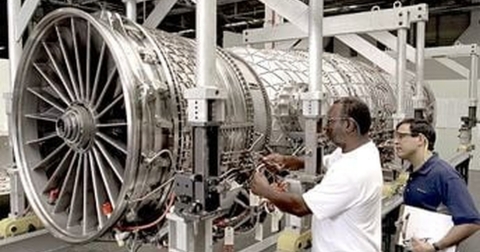Connecticut's Economic Growth in Spring 2025 Ranked in Top 10 Nationally

26 Sep 2025
News
Connecticut’s economy grew the fastest among states on the East Coast in the spring of 2025, according to new federal data.
In the second quarter of 2025, Connecticut’s real gross domestic product increased 4.6%, on an annual basis, ranking joint-ninth among the states and surpassing the national rate of 3.8%, according to data released Friday by the federal Bureau of Economic Analysis. The state’s growth was powered by several sectors, including finance and insurance, manufacturing and information.
The economic expansion of Connecticut in the second quarter — which contrasted with a 0.3% first-quarter uptick that was originally estimated to be a 0.9% decline — indicates that Connecticut is adapting to the new tariffs imposed by President Donald Trump’s administration. While they have expressed concerns about the tariffs' immediate impact, officials in Gov. Ned Lamont's administration remain bullish about the state's long-term prospects.
“I think our businesses and consumers now have a better idea and can predict the future a little better, so we’re starting to see more positive trendlines,” Daniel O’Keefe, commissioner of the state Department of Economic and Community Development, said of the adjustment to Trump’s trade policies, in a speech Thursday at the Stamford Chamber of Commerce’s annual meeting.
O’Keefe added that, “The fundaments of the Connecticut economy are still strong…This, in my view, is a time for investments. It’s not a time to run for the hills and get on defense. This is a time when state economies and state governments can step up.”
Through a number of endeavors, Lamont’s administration has sought to mitigate the tariffs’ impact. They include the Strategic Supply Chain Initiative, a grant program that encourages companies to start or expand production in the state.
“What I’m not seeing is companies shut down operations overseas and move them here. I thought I might; that was overly optimistic. People don’t make those kinds of major decisions when there’s so much uncertainty in the environment. That’s the bad news,” O’Keefe said. “The good news is we have seen existing Connecticut companies agree to move production capacity from overseas to their existing physical plants here.”
It remains to be seen how Connecticut and the rest of the country will adjust to tariffs enacted in the past few months and subsequent levies. Trump said Thursday that, starting on Oct. 1, he would impose import taxes of 100% on pharmaceutical drugs, 50% on kitchen cabinets and bathroom vanities, 30% on upholstered furniture and 25% on heavy trucks.
At the same time, Connecticut still faces long-term challenges such as limited jobs growth. The state’s number of payroll jobs has increased 0.7% in the past year, compared with a national uptick of 0.9%, according to data from the state Department of Labor.
There are plenty of job openings — about 80,000 statewide, according to DOL. But 76% of employers said that they were having difficulty hiring and retaining workers, with skills gaps “a key challenge,” according to the Connecticut Business & Industry Association’s 2025 Survey of Connecticut Businesses.
Among other economic indicators reported Friday by the BEA, personal income in Connecticut increased 6.3% on an annual basis in the second quarter of 2025, compared with a nationwide uptick of 5.5%.
Read the original article here.
More Topics



.png)








